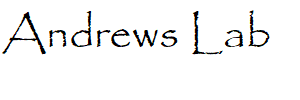Evidence that the middle T antigen of polyoma virus interacts with the membrane skeleton
Andrews, D.W., Gupta, J. and Abisdris, G., Evidence that the middle T antigen of polyoma virus interacts with the membrane skeleton. (1993) Mol Cell Biol., 13: 4703-4713.
Read MoreThe role of the N region in signal sequence and signal-anchor function
Andrews, D.W., Young, J.C., Mirels, L. and Czarnota, G., The role of the N region in signal sequence and signal-anchor function. (1992) J Biol Chem., 267:7761-7769.
Read MoreBoth the 5′ untranslated region and the sequences surrounding the start site contribute to efficient initiation of translation in vitro
Falcone, D. and Andrews, D.W., Both the 5′ untranslated region and the sequences surrounding the start site contribute to efficient initiation of translation in vitro. (1991) Mol Cell Biol., 11:2656-2664.
Read MoreA nascent membrane protein is located adjacent to ER membrane proteins throughout its integration and translation
Thrift, R.N., Andrews, D.W. and Johnson, A.E., A nascent membrane protein is located adjacent to ER membrane proteins throughout its integration and translation. (1991) J Cell Biol., 112:809-821.
Read MoreExamining Protein Translocation in Cell-Free Systems and Microinjected Xenopus Oocytes
Andrews, D.W., Examining Protein Translocation in Cell-Free Systems and Microinjected Xenopus Oocytes. (1989) BioTechniques, 7:960-967.
Read MoreEvidence for a two-step mechanism involved in the assembly of functional signal recognition particle receptors
Andrews, D.W., Lauffer, L., Walter, P. and Lingappa, V.R., Evidence for a two-step mechanism involved in the assembly of functional signal recognition particle receptors. (1989) J Cell Biol., 108:797-811.
Read More
 Find David Andrews Lab Plasmids
Find David Andrews Lab Plasmids